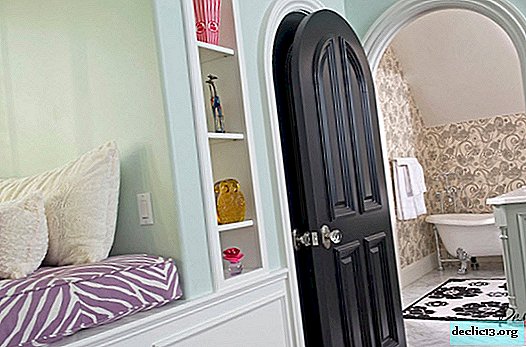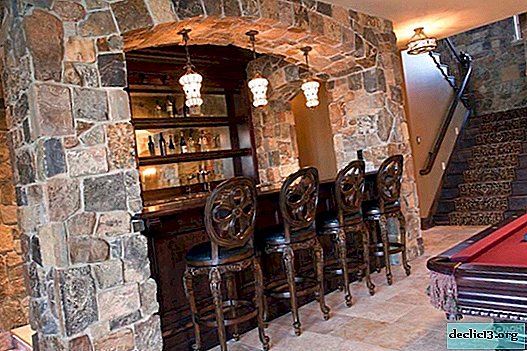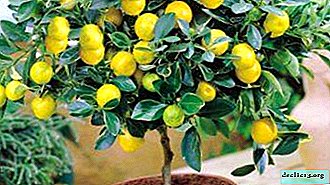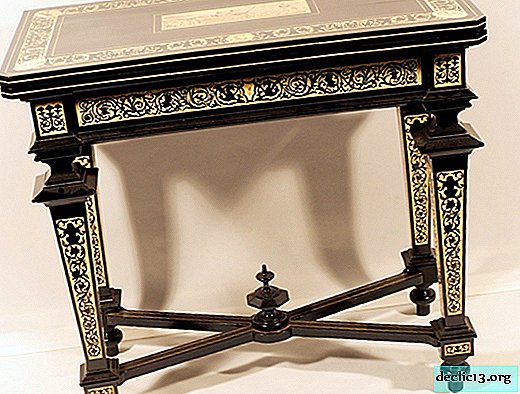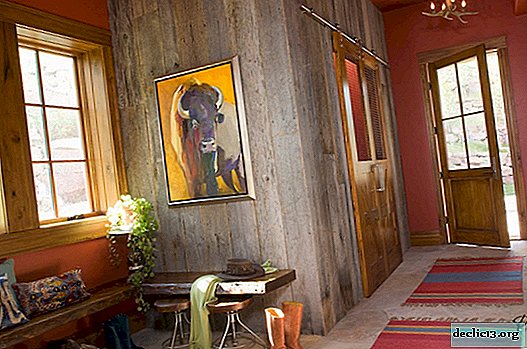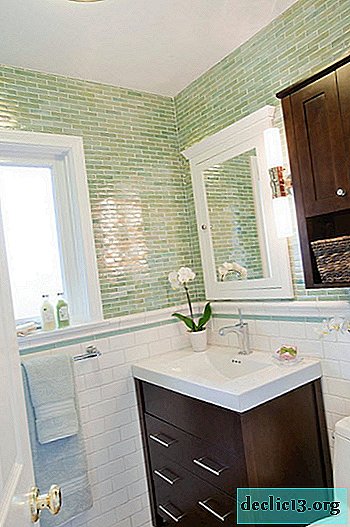Practical tips for the care and cultivation of pelargonium Prince Gustav. External features and photo of the flower
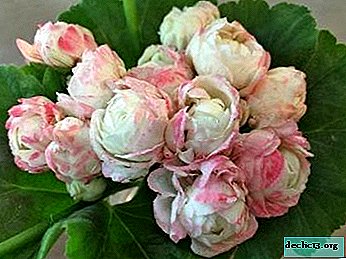
Roseteric pelargoniums are the most decorative representatives of this large family. Now rosebud varieties are gaining more and more popularity, constantly winning all kinds of awards at international exhibitions, and are able to become an adornment of any interior.
In the article, we will consider such a new variety of rosaceous pelargoniums as Prince Gustav, find out the features of its cultivation, learn how to plant a plant, how to care for it.
Description
Pelargonium Prince Gustav - one of the latest innovations in the world of rose-beet varieties. Despite its still short history of existence, this pelargonium was able to win many prizes at exhibitions, as well as the hearts of many gardeners. The plant has an unusual appearance - lush buds look like small cabbage heads of a gentle green hue.
REFERENCE! Pelargonium due to its appearance is obliged to a random mutation, which then as a result of purposeful selection work was fixed as a species property. Through seeds, the mutation is not transmitted, only through cuttings.Note that terry hybrid varieties do not have a smell, but they completely compensate for this small drawback with their magnificent flowering.
The cuttings of this pelargonium are expensive - about 2500 rublesBut even the high price does not stop most gardeners from buying. And those who still could not afford to get Prince Gustav, do not get tired of dreaming about this plant. Next, we consider the external features of the flower, for which he is so loved by everyone.
External features
The main feature of this decorative plant is its flower buds - large, lush, similar to small heads of cabbage, roses and peonies at the same time. Note that some confuse this variety with a tulip-like variety, since the buds of Prince Gustav are quite dense, however, the variety belongs to the rose-like species.
One bud consists of a fairly large number of elegant delicate petals located inside each other, and having one common closing point in the middle. Petals have slightly wavy edges, which gives the buds even more decorative. Flowers are not located separately, but in groups, peculiar bouquets.That looks very impressive.
Inflorescences look especially beautiful against the background of shiny glossy foliage of a dark green hue. This combination looks extremely unusual and very decorative.
Photo
Take a look at the photo of the flower, its beauty will not leave you indifferent:





Landing
We learn the basic requirements of this plant to its habitat: lighting, air temperature, soil composition.
Lighting and location
IMPORTANT! Prismatic pelargoniums are quite photophilous, and Prince Gustav is no exception. However, direct sunlight should not fall on leaves and buds, as this can lead to burns.Therefore, in the afternoon, shade the pot with the plantso that the buds do not lose their appeal. Direct sunlight also negatively affects the foliage, leading to its drying and yellowing.
The soil
Soil for Prince Gustav is suitable and standard, sold in stores marked "for pelargonium." In such formulations, all components are optimally taken into account, nutrients are added, and disinfection from pests and microorganisms is carried out. Note that the soil must have a neutral acid reaction (5.6-6.5 pH).
If you want to make the soil yourself, you will need the following components:
- 4 parts of turf;
- 2 parts of peat and humus;
- 1 part of coarse sand and medium perlite.
This is the optimal composition for rosaceous pelargonium: in a similar soil mixture, the plant will be able to develop fully and quickly. However, do not forget to disinfect the self-prepared mixture before planting, especially if you used components taken from the street.
A plant will bloom more luxuriantly and for a long time if you plant it in a small pot. In volumetric capacity, Prince Gustav will give elegant greens, however, he may refuse to bloom.
Care
Consider the main features of the care of pelargonium Prince Gustav.
Air humidity
Pelargonium of this variety is not too picky in this regard. Humidity doesn't matter to Prince Gustav, therefore, it is enough only from time to time to ventilate the room where the flower is located.
Watering
 The plant needs regular, but not too plentiful watering. Frequent and abundant watering of this pelargonium is not good, because it causes rotting of its roots and stems. Therefore, it is recommended to water only after the top layer of the substrate in the pot dries. It is advisable to check the soil moisture level with your finger in advance to prevent overmoistening.
The plant needs regular, but not too plentiful watering. Frequent and abundant watering of this pelargonium is not good, because it causes rotting of its roots and stems. Therefore, it is recommended to water only after the top layer of the substrate in the pot dries. It is advisable to check the soil moisture level with your finger in advance to prevent overmoistening.
As for the temperature of the water, it should be warm or cool, but not cold. It is also important to water the plant with soft water without an admixture of lime, therefore it is recommended to defend tap water.
Top dressing
ATTENTION! For a full and magnificent flowering, a plant needs a lot of nutrients. It is recommended to use mineral complexes designed for geraniums and pelargoniums - balanced compositions will suit the plant in the best way.In spring, it is important to add nitrogen fertilizers to the soil.so that the plant is lush green. But before flowering, it is necessary to abandon the nitrogenous compounds and switch to potash-phosphorus: this measure will help the pelargonium bloom more magnificent.
Pruning
To form a dense and compact bush, it is recommended to carry out regular pruning and pinching of the flower. It is better to carry out the pruning procedure in the fall, and pinching is required for young shoots as they grow.
Pests and diseases
- Often this pelargonium suffers from yellowing and drying out of the leaves. A common cause of this problem is insufficient watering. Try to increase the volume of water and the frequency of watering - in most cases, the plant will respond positively to this, and the leaves will stop drying out.
- Sometimes foliage turns yellow only from below, this most often indicates a lack of light. In this case, place the pot closer to the window, and if it’s summer time, you can take it outside.
- Often there is swelling on the leaves of pelargonium. The appearance of soft watery pads is associated with excessive moisture of the plant. Temper watering and swelling will pass.
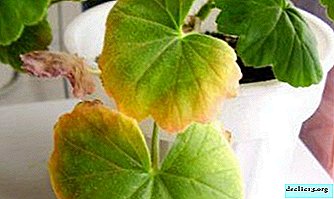 Drying of the flowers caused by the defeat of the plant with a fungal disease. In this case, pelargonium is treated with a Bordeaux mixture (5%) as well as with Fitosporin.
Drying of the flowers caused by the defeat of the plant with a fungal disease. In this case, pelargonium is treated with a Bordeaux mixture (5%) as well as with Fitosporin.- The defeat of flower mold. The reason for this misfortune is excessive soil moisture at not high enough air temperature. In order to eliminate mold, the plant needs to be watered less often and often aired. Treatment with fungicidal preparations also does not hurt, and all affected leaves must be removed.
In addition to the above, sometimes Prince Gustav suffers from diseases such as rust, spotting. These pathologies manifest themselves especially clearly: as contrasting spots and dots on the leaves. Special drugs will help cope with diseases.
As for pests, then Pelargonium Prince Gustav may threaten:
- aphid;
- whitefly;
- spider mite.
Breeding
Since Prince Gustav belongs to the rosebud varieties, this plant propagates exclusively by cuttings. The fact is that during seed cultivation, hybrid pelargoniums do not inherit parental decorative properties, therefore, characteristic roses with this method of reproduction in the plant will not work - an ordinary flower will grow. Therefore, we will consider only the method of cuttings.
- The best time for grafting is between March and July.. To get the stalk, it is necessary to cut off the apical shoot from the mother plant with three to five internodes. Note that green shoots do not need to be cut off, since they do not take root.
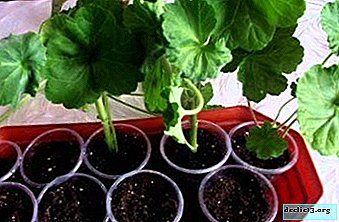 Within an hour, the stalk must be driedwrapped in paper, and then planted in a prepared nutrient substrate (soil + peat, coconut mixture). It is important to carefully remove the green leaves and inflorescences from the part of the stalk that will be underground. The escape deepens on one internode.
Within an hour, the stalk must be driedwrapped in paper, and then planted in a prepared nutrient substrate (soil + peat, coconut mixture). It is important to carefully remove the green leaves and inflorescences from the part of the stalk that will be underground. The escape deepens on one internode.- In the first days after planting, the stalk is watered a little, keep in a well-lit place (but not in direct sunlight). In two or three weeks, as a rule, Prince Gustav takes root. If you plant the stalk in a transparent plastic cup, you can see the first roots and make sure that the rooting has taken place accurately.
Conclusion
We met one of the most beautiful varieties of pelargonium today - Prince Gustav. The royal name in this case fully corresponds to the appearance: Prince Gustav is distinguished by exceptional external showiness and unusualness. Since the plant is not cheap and is still a novelty, it is better to grow it for experienced gardeners: with proper care and observing the rules of maintenance, Prince Gustav will surely please with magnificent plentiful flowering.

 Drying of the flowers caused by the defeat of the plant with a fungal disease. In this case, pelargonium is treated with a Bordeaux mixture (5%) as well as with Fitosporin.
Drying of the flowers caused by the defeat of the plant with a fungal disease. In this case, pelargonium is treated with a Bordeaux mixture (5%) as well as with Fitosporin. Within an hour, the stalk must be driedwrapped in paper, and then planted in a prepared nutrient substrate (soil + peat, coconut mixture). It is important to carefully remove the green leaves and inflorescences from the part of the stalk that will be underground. The escape deepens on one internode.
Within an hour, the stalk must be driedwrapped in paper, and then planted in a prepared nutrient substrate (soil + peat, coconut mixture). It is important to carefully remove the green leaves and inflorescences from the part of the stalk that will be underground. The escape deepens on one internode.

